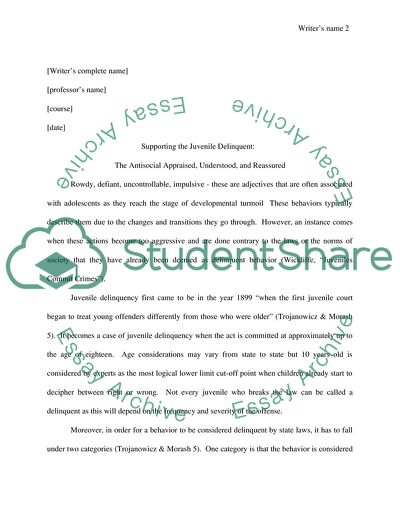Cite this document
(Supporting the Juvenile Delinquent: The Antisocial Appraised, Article, n.d.)
Supporting the Juvenile Delinquent: The Antisocial Appraised, Article. https://studentshare.org/sociology/1717930-juvenile-delinquit-behavior
Supporting the Juvenile Delinquent: The Antisocial Appraised, Article. https://studentshare.org/sociology/1717930-juvenile-delinquit-behavior
(Supporting the Juvenile Delinquent: The Antisocial Appraised, Article)
Supporting the Juvenile Delinquent: The Antisocial Appraised, Article. https://studentshare.org/sociology/1717930-juvenile-delinquit-behavior.
Supporting the Juvenile Delinquent: The Antisocial Appraised, Article. https://studentshare.org/sociology/1717930-juvenile-delinquit-behavior.
“Supporting the Juvenile Delinquent: The Antisocial Appraised, Article”. https://studentshare.org/sociology/1717930-juvenile-delinquit-behavior.


